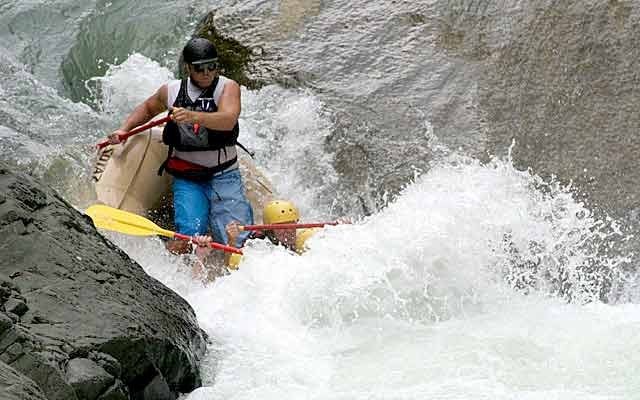When Graham Young bought Canadian Outback Rafting this past winter, he could not have imagined the kind of wild ride in store this summer.
For the past 10 days, the Elaho wildfire has raged out of control in his business' backyard, threatening his livelihood and snuffing out his hopes with each passing kilometre southwards.
Just as he was preparing a speech for his 20-member staff, saying the season was over, possibly even the business, Young had news that fireighters had held the line on the fire. They had stopped its burning path down the Elaho Forest Service Road.
Canadian Outback Rafting would be back in business again, starting Wednesday, July 15.
"It's life altering," said Young simply.
"The worst case scenario that they were pitching to us was basically that the fire was going to burn all the way down to the powerhouse there, which is basically where the road turns from concrete to gravel, and that's our entire access."
In addition to cutting off his business for years, there was the chance the fire would destroy "one of the most beautiful valleys I've ever seen," said Young.
When he heard the firefighters were holding the line more than 15 kilometres from where they put the rafts in the river, he was able to finally catch a breath.
"We're back in business starting tomorrow," said a relieved Young on Tuesday.
"It's pretty amazing to be coming out the other side of it right now, feeling this way."
The Elaho fire is still zero-per-cent contained, mostly due to the steep terrain, burning through 12,132 hectares, but the tides appear to the changing in favour of the firefighters battling the blaze.
At the provincial daily wildfire update July 14, Fire Information Officer Navi Saini confirmed that no growth has occurred in the last few days on the southern and northern flanks of the fire.
"Crews are continuing to make very good progress," she said.
"And cooler conditions are allowing crews to get closer to that fire to put control lines and anchor points in."
Further north, closer to Pemberton, the Boulder Creek fire is also zero-per-cent contained at 5,361 hectares, but there is good news on that front, too.
"We didn't see any major growth in that fire either again due to favourable weather conditions," said Saini.
Though both wildfires were caused by lightning strikes, more than one-third of the 1,086 wildfires this season have been caused by humans.
That's 375 fires, burning 44,000 hectares.
The province is looking to crack down on the human factor.
"While the vast majority of people in this province are acting responsibly, the number of human-caused fires remains troubling," said Forests, Lands and Natural Resource Operations Minister Steve Thomson in a phone briefing.
He announced that the government would be revisiting the fines and penalty structures under the Wildfire Act, looking at ways to enhance deterrents and penalties in an effort to reduce the number of human-caused wildfires.
His Parliamentary Secretary Mike Morris will be leading the charge.
"We need to send a clear message that we take this issue very seriously, that human-caused wildfires are unacceptable," said Morris.
He said he would be looking at things such as banning those who break the fire bans from provincial parks and possibly impounding vehicles if people flick cigarettes out the window.
Saini said the ratio of human-caused fires to lightning-strike fires varies from season to season — some years it's as high as 50 per cent.
She added: "The message we like to get out is: regardless of cause, one human-caused fire is one fire too many."




